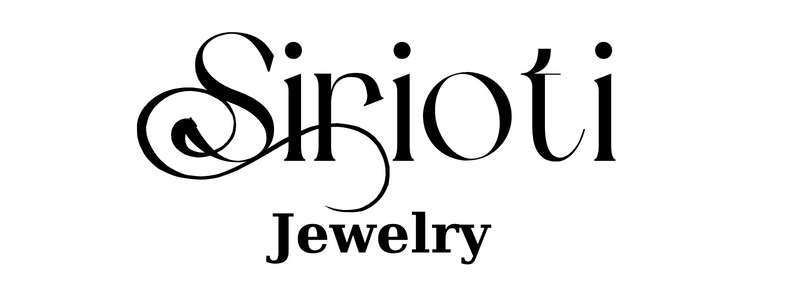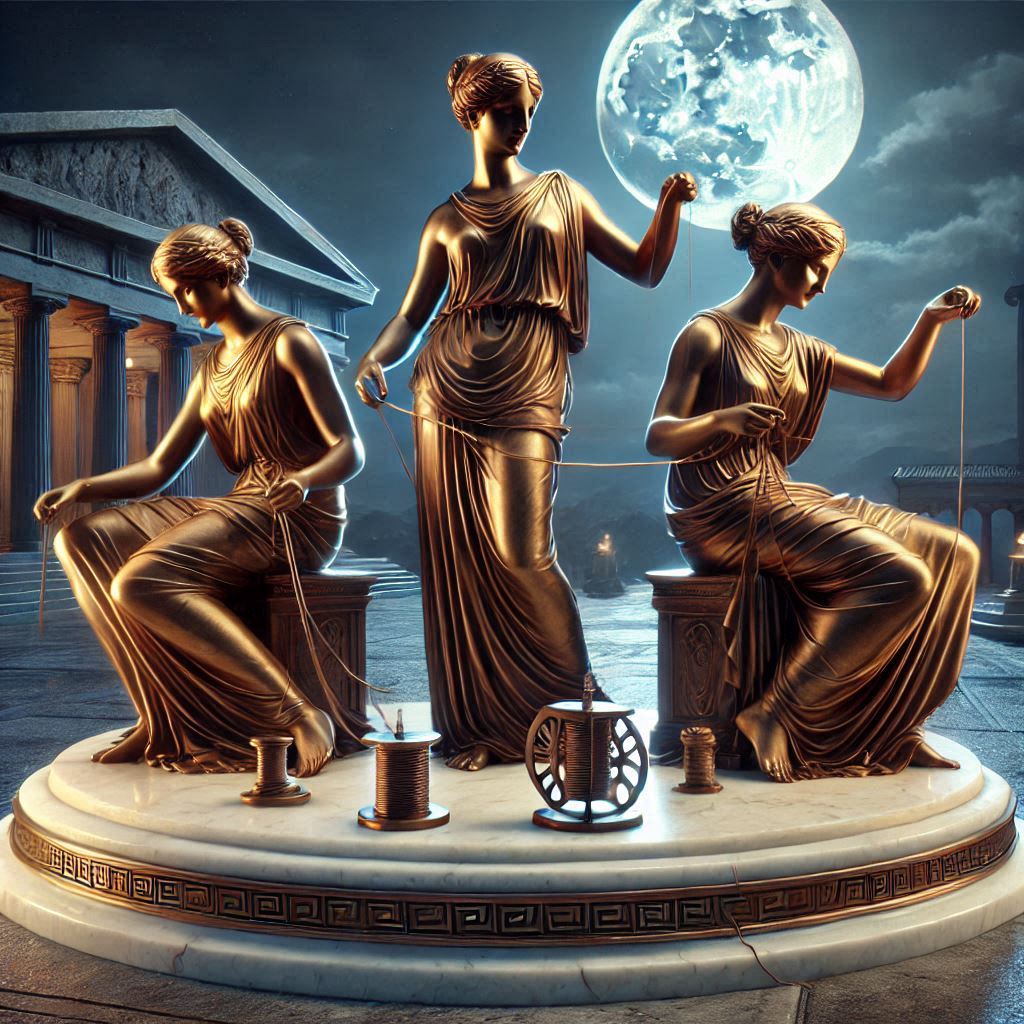Die Schicksale der griechischen Mythologie: Spinner des Schicksals
In der griechischen Mythologie sind die Moiren mächtige und rätselhafte Figuren, die das Schicksal von Göttern und Sterblichen gleichermaßen bestimmen. Sie verkörpern die Unvermeidlichkeit des Lebens – seinen Anfang, seine Reise und sein Ende. Trotz ihrer Bedeutung bleiben die Moiren in Geheimnisse gehüllt und werden oft von bedeutenderen olympischen Göttern überschattet. In diesem Beitrag werden wir uns mit ihren Ursprüngen, Rollen und der tiefgründigen Symbolik befassen, die sie in sich tragen.
Wer sind die Schicksalsgöttinnen?
Die drei Schicksalsschwestern, im Griechischen Moirai genannt, sind die drei Schwestern, die den Lebensfaden aller Wesen kontrollieren. Jede Schwester hat eine bestimmte Rolle:
- Clotho : Spinnt den Faden des Lebens und repräsentiert Geburt und Anfänge.
- Lachesis : Misst den Faden und bestimmt die Länge des Lebens und seiner Ereignisse.
- Atropos : Schneidet den Faden durch und bedeutet das Ende des Lebens.
Ursprünge der Schicksale
Die Ursprünge der Schicksalsgöttinnen variieren in den verschiedenen Mythen. Einige Quellen beschreiben sie als Töchter der Nyx (Nacht), die ihre ursprüngliche und kosmische Kraft verkörpern. Andere nennen Zeus und Themis als ihre Eltern und verbinden sie mit göttlichem Recht und Ordnung. Ihre zweideutige Abstammung trägt zu ihrer mysteriösen und universellen Natur bei.
Rollen und Pflichten
Die Hauptaufgabe der Schicksalsgöttinnen besteht darin, das Schicksal aller Sterblichen und Unsterblichen zu überwachen. Sie sind unparteiisch und unnachgiebig und sorgen dafür, dass jedes Leben seinem vorherbestimmten Lauf folgt. Sogar die Götter, einschließlich Zeus, werden oft als ihren Entscheidungen unterworfen dargestellt, obwohl einige Mythen darauf hindeuten, dass Zeus sie gelegentlich beeinflussen könnte.
Das Schicksal vs. der freie Wille
Die Schicksale werfen faszinierende philosophische Fragen zum freien Willen auf. Waren die Sterblichen ihren Entscheidungen gegenüber völlig machtlos oder hatten sie innerhalb der Grenzen ihres Schicksals einen gewissen Handlungsspielraum? Die alten Griechen setzten sich mit diesem Paradox auseinander und spiegelten es in ihren Tragödien und Mythen wider, in denen Helden oft gegen scheinbar unausweichliche Schicksale ankämpfen.
Symbolik des Fadens
Der Lebensfaden symbolisiert die Existenz selbst – ihre Zerbrechlichkeit, Kontinuität und ihr unausweichliches Ende. Das Spinnen von Klotho, das Messen von Lachesis und das Schneiden von Atropos veranschaulichen die Reise des Lebens von der Geburt bis zum Tod. Dieses Motiv erinnert uns an die Vergänglichkeit des Lebens und die Verbundenheit aller Wesen.
Mächte des Schicksals
Die Schicksale besitzen beispiellose Macht über das Leben der Sterblichen und Götter. Sie bestimmen die Dauer und den Verlauf der Existenz und sorgen dafür, dass das Schicksal sich wie vorgesehen entfaltet. Ihre Entscheidungen sind absolut und nicht einmal die mächtigsten Olympier können ihre Dekrete konsequent ändern. Diese immense Macht unterstreicht ihren Status als göttliche Schiedsrichter des Schicksals.
Symbole der Schicksale
Die Schicksalsgöttinnen werden oft mit Werkzeugen dargestellt, die mit ihren Aufgaben in Zusammenhang stehen. Klotho hält eine Spindel, Lachesis trägt einen Messstab und Atropos schwingt eine Schere. Diese Symbole veranschaulichen anschaulich ihre Rolle beim Weben, Messen und Schneiden des Lebensfadens. Sie dienen als bleibende Erinnerung an die unausweichliche Natur des Schicksals.
Abschluss
Die Schicksalsgöttinnen gehören zu den faszinierendsten Figuren der griechischen Mythologie und verkörpern den unaufhaltsamen Fluss von Leben und Tod. Sie fordern uns auf, über Schicksal, freien Willen und das empfindliche Gleichgewicht der Existenz nachzudenken. Indem wir ihre Geschichten verstehen, gewinnen wir ein tieferes Verständnis für die antike griechische Weltanschauung und ihre Bedeutung für unser eigenes Leben.

